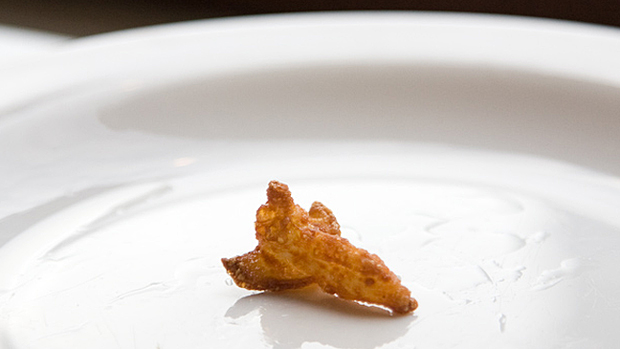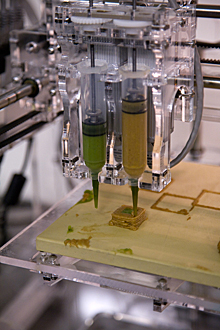
This is the result of what happens when you mix engineers with a culinary school. Using 3D printers, the New York City-based French Culinary Institute, teamed with the computational synthesis laboratory at Cornell University, have constructed edible objects using pureed foods in place of ink.
 What did they make?
What did they make?
- Miniature space shuttles made of ground scallops and cheese
- Interesting crispy corn snacks made from squiggly patterns
- Everything from chocolate, cheese and hummus to scallops, turkey, and celery
Printing from a syringe
Jeffrey Lipton, a researcher and graduate student at the lab said, “It lets you do complex geometries with food that you could never do by hand. The process is pretty simple. Just as your 2D printer puts droplets of ink onto a page to create an image, this draws lines of material on top of each other to create a 3D object.”
The real excitement comes because of the possibility of creating textures and foods that have never been experienced before. “Imagine [a food] almost like a meatloaf that absorbs sauce like a sponge. That is cool — much cooler to me than printing some ersatz steak.”